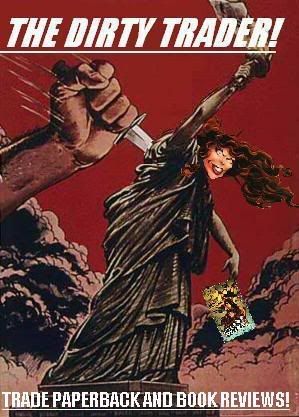
The Short Version? Sex. City Optional.
What Is It? Comedy-Drama
Who Is In It? Nobody you know.
Should I See It? Maybe.
Like most scripted original cable softcore series, The Girl's Guide to Depravity has a weird, sketchy history. Originally running from late February through May of 2012, the show stayed off the schedule for sixteen months, only to return with a rejiggered cast/sets/etc. What were the adventures of a couple of under-thirty professional women and best friends following the dating advice of the exalted but rarely seen Sienna switches to a trio that shuffles off the former co-lead in the season premiere. The show used to go out of its way to tell viewers it was set and filmed in Chicago, but it looks like Bucharest, Romania is now its primary locale. Basically, the series must have worked well enough to manage an extension, but not so well as to evade sweeping changes. How well does that work out? Let's see...
- "The Girl On Girl Rule": Since last season, Rebecca Blumhagen has co-starred with Parker Lewis Can't Lose in a straight to video sci-fi thriller, and has in the pipeline a romantic comedy with Jaimie Kennedy and fourth lead in a Lily Tomlin vehicle. That's positively stellar compared to the currently unemployed actress Sally Golan, which bums me out. Sam may have gotten the web hits for her occasional awkward reverse-jailbait shagging, but Lizzie was the salvation of most episodes with her distinctive looks and steadier delivery of the goods. Lizzie may have been the less likable "bitch" character, but she was also the determined, motivated one who could cycle through boy toys and had a "story engine" through her legal career to create plots. Sam is the relationship girl, who is still in a relationship with the relationship guy from last season. All of Sam's plots last season were about her desperation to land a man, and as the meek "relatable" one, her carrying the show on her own spells trouble.
The season premiere is extremely clunky, trying to pull off the effects and overall vibe of the series debut on a plainly smaller budget with two seeming Cousin Olivers wedged in. However, the soundtrack for the musical montage is good, and it soon becomes apparent that John Doggett and Monica Reyes might end up being Steve Urkels. Instead of bringing back Dirty Hot Guy, some French dude is introduced and incites Lizzie's exit. Sam has boring, badly scripted old people sex with the returning Jason (Jesse Liebman.) With the reliably porny neighbor Riley Steele quietly written out, the show desperately needed new blood. Playing to extremes, Tessa Harnetiaux's Megan is vastly more pathetic and clueless than season 1 Sam, while Megan Barrick's Jenna overshoots Lizzie, aiming for Sienna-level calculated depravity. That actually makes more sense for a series based on a tongue-in-cheek blog intended to guide young women in the ways of debauchery and revenge. Veteran writer Chloe Danger and director Alex Merkin maintain the tone of the first season, and once the messy business of the retooling is dispensed with, one hopes the cavorting shenanigans will see an uptick.
- The Do Me Rule: You have to give the show credit for having much greater conviction in its characters and stories than most Skinemax fare. Lizzie only has a cameo, but her presence (or lack thereof) still permeates every scene involving Sam and/or Jason. It matters that she was there and is now gone, so I suspect the producers want to keep the door open. I understand Sally Golan is an event planner and daughter of a billionaire, so this might all be on her.
Moving on, the men appearing on this show have gotten sleazier, and therefore offer more excuses for guiltless abuse, as opposed to the more average-to-nebbish fellows last season. Time is being taken to organically insert the new characters into the ongoing narrative, which is appreciated. God, the new girls are white though. Like, deep European forest white where communism prevented immigration and commingling of the races white. It's also unfortunate that on-screen texting plays a major part in scenes, but the effects are so poorly executed as to be illegible. It's the first program I know of to recreate the tedium of sidelining a conversation to wait for your friend to finish playing with her phone.
- The Bar Sex Rule:
I'm not sure the geeks or anyone else have won when even softcore shows start integrating heavy continuity into their narratives. There's callbacks to previous episodes this season, one from last season, and developing subplots. I'm not sure all this fucking soap opera is good for my fucking cable porn. Anyway, it's a nice enough episode, where the Barney Stimple type Dean (Nick Clark) gets a sort of comeuppance, but not before a decent few minutes of boning. The new trio of leads finally come together, not entirely organically, but it's progress.
Megan should be my type, but as written, she's horrible. She hooks up with a guy who falls on the wrong side of believable metrosexuality while both praise a horrendous eurotrash dance song as "genius." I'm hating these two, and I have no faith in his having an actual boner. Speaking of boners, way to wait until the end of episode three to alleviate the main impediment of the series moving forward.
- The Morning After Rule: Oh, dear, God. Who wants lots of slow moving relationship stuff in their softcore? How about a show where there are two job locations spotlighting hateful dragon ladies, and the viewer sides with them over the spineless pseudosympathetic primary characters? Oh, and the hardbodies that get a sex scene with potential in the first half peter out quickly with lots of guilt attached. Yay? Rebecca Blumhagen has been co-writing these episodes, and that perhaps needs to stop.
This show feels like it's in damage control mode. Lizzie keeps phoning (or in this case, Skyping) in cameos to keep her presence felt. Rachel Ward (Chasty Ballesteros) is a newer character whose entire personality is formed out of Lizzie's working relationship with Jason and other "lesser" men. Megan is a more pathetic overacted spare Samantha, who has herself mostly drifted aimlessly. Jenna, who was already a combination of Lizzie and Sienna, has her screen time given to Rachel as she (barely) appears as gullible and passive while her boyfriend is off doing what he does. In the midst of all this, Sam's younger brother Charlie (Blake Lowell) moves in. Why the fuck are there so many new redundant characters crowding the air out of the room? If women are writing these shows, why isn't there more diversity in the personalities of the female characters? In a show with "depravity" in the goddamned title, why is everyone moping and muddling through boring couplings?
- The Get Under Another Rule: I started watching episodes from the first and second seasons consecutively, pitting them against one another, with the first season winning consistently. However, "he Bitch Rule" was one of the least appealing episodes of the first run, so there's a chance for a shake-up here.
Not off to a good start, though. Jenna seemed like she was going to be the crazy cool vindictive "Girl," but she settled back into boring couples sex with her cheating longtime boyfriend Ben, making her the wrong kind of sucker for this type of program. Speaking of dull partners, Sam and Jason are still dealing with their issues, though I prefer Jason's handling. Megan continues to be borderline disturbing and squicky. It's up to newly introduced supporting characters Rachel, Charlie, Dean, and Jason's lesbian ex Amy (Nicole Rodenburg) to keep the show afloat. The unconvincing trio of girlfriends sure aren't making it happen. The episode ultimately pulls ahead of the pack through some peculiar but amusing creative choices and some of the most interesting sex scenes of the season late in the show.
- The Fuck Yes Rule: Bi-seasonal synchronization is proving detrimental to my viewing pleasure, as this episode continues the upward trajectory from last time, but I watched it after seeing "The Magic Pussy Rule," one of the best episodes of the entire series. Sally Golan and Rebecca Blumhagen had a rare, sincere chemistry by softcore standards that clearly cannot by replicated. The producers are wisely pushing the show to become more of an ensemble, here spotlighting Amy in only her second show appearance. I don't recall if we've seen any girl-girl action previously on this series, and while the sex scene doesn't quite click, I respect the handling of the new lesbian elements. I just wish the attempts at comedy landed, like, almost ever. There's some needed (though predictable) story progression, so that's a good thing.
- The Hos Before Bros Rule: The show appears to finally be settling after the upheaval of the first half of the season, but what it's settling for is more in line with an upscale Life on Top or Co-Ed Confidential than the low rent Sex & the City of season 1. There are a lot more characters offering greater opportunities and varieties for sex scenes, but they're all sub-sitcom shallow, though there still seems to be effort in the writing/acting/production values above the typical Skinemax fare. On the other hand, the illogical convolutions necessary to get out of them clothes seem like an awful lot of work when fellow network fare embraces a more laissez-faire (porny) attitude. Meanwhile the sex doesn't benefit from the added neurosis and dubious characterization. I mean HBO's Girls is one of the least sexy and most depressing things on TV, so having Sam's current beau be an Adam Driver cosplayer is a bit of a turn-off. It would almost be an improvement to return to the nondescript himbos she cycled through before Jason.
- The Basic Instincts Rule: This episode addresses some subplots, and by that I mean stuff that has gotten mentioned here and there progressed a smidge in a single story, not that there's some overarching narrative coming to fruition. This is a checklist of plot points on an email circulating the writing staff's mailing group, not Saucy Seinfeld. Probably the best possible coupling among the new characters was dismissed as a one-off, but it's not like we need another static relationship, and it's not like anyone cares about these people. In a nod to progress, the lesbian gets scenes of development in her coupling, but no sex, and her ambivalence counters her initial depiction as a free spirit injecting some pizzazz into the show. Perceptive Bear has hooked up with the only other gay guy on the show, Tyler the barkeep, but I'll allow it because he's the best character on the show whose name I can't recall, so he needs more screen time. I do remember Dean's name now though, because he kept appearing, even though he's a stereotypical womanizer whose main purpose is to aggravate the increasingly unsympathetic and uncharismatic Sam while delivering the eye candy for his nigh-episodic schtooping sessions (by which I mean he's done the deed in many episodes, not that his scenes make you want to hit the fast-forward button from tedium, like sex addict Ben's.) Something's gone terribly wrong when the "plucky" female lead is waging a workplace war against a slimy heel, and you don't know if you should root for her, because at least the cad isn't a total boor.
- The Wingwoman Rule: Blair! Perceptive Bear is Blair. It even rhymes. Oh, and Amy is the lesbian. I thought it was kind of dehumanizing to just call her the lesbian. Yes, she's several episodes into a storyline about her anxiety over moving in with a girl she's only known a few weeks that takes up approximately 90 seconds per episode, and her only other appearances have been as a barmaid serving her "friends" with minimal dialogue, and she's had two instances of showing her tits for totally arbitrary reasons plus one tepid love scene, so all signs point to her being a stereotypical committee inclusion instead a character any of the writers want to deal with, but that's no excuse to define her solely by her sexual preference. She's Amy the Token Lesbian. I can probably remember that.
What was this episode about? Oh yeah-- after my shit talking, the show really is advancing a variety of established storylines seemingly toward a resolution by season's end. Ben struggles with his sex addiction while Jenna stands way too firmly behind him. Megan might actually be formulating some sort of personality as she and Charlie prove less casual than either thought. Sam's passivity has been falling away between her conflicted relations with Jason and not-Adam Driver, but more so because of her professional and personal rivalry with Dean combined with the stress of her girlfriends' needs. Sam could no longer carry the show as Sam, so she's filling the personality and motivational vacuum left by Lizzie. Blumhagen can't carry it off as well as Golan did by half, but it's better than Sam continuing to float along. There's a couple of sex scenes if I recall correctly-- no wait, three. They're all kind of fucked and unappealing, but they come somewhat naturally from the stories. But, umm, what I said about lowlife Dean being a better character than Sam this season? Developments here embolden that dicey proposition. Sam is behind the most depraved initiative of the show's history, but it's really not cool, y'know'wa'a'mean? - The Breakup Sex Rule: Holy shit, this show is becoming zany! Zany is good. It's fun and bubbly and entertains during the refractory period. The writers are also carrying their storylines along, with continuity and complications that keep things interesting. One problem I had with the first season was its "you can watch any episode in any order without it mattering much" nature, which is fine if you're just doing crappy softcore, but nobody writes reviews for that stuff that don't involve a picture scale of various stages of penile erection as its primary critical measure. They still need to figure out what to do with The Lesbian Amy though, because her dull story isn't going anywhere and feels like an intrusion on the better material surrounding it. Also, since this season has been at least partially defined by my increasing dislike of Sam, I'll add that she has another sex scene that is practically interchangeable with any other Sam sex scene throughout the series. It's funny, as Megan started out as entirely pathetic, but has worked her way up to replacing season one Sam, except Megan's sex scenes are much more diverse in practice and partners. Plus, Sam cockblocked Megan and Charlie, which was a better pairing than any other in the series. Megan's become a better Sam than Sam, while Sam's a much worse Lizzie, so I'm at the point where the character could be jettisoned and it would only improve the show.
- The Back Door Rule: Hannah Fierman's Pill Pusher Patty was great in the first season, so I resented Christina Collard's replacement Pill Pusher Penni, but she ended up in five times as many episodes. That's bound to wear you down if the actor is any good at all, so while I miss Patty's intensity and near psychic intuition, Penni's bizarre behavior and chemistry with Tyler won me over. Sam and Ryan's screwball romcom plot makes me not hate both those characters. I don't know why they saved all the good music for later episodes, but I really enjoy the soul and jazz numbers that enhance the lovemaking and even comedy bits. Rachel and Jason remain among my favorite characters, though I was bummed that this was easily Chasty Ballesteros' worst material of the season, and hope that was an aberration. Regardless, I'm liking the series again, and now that it's got so many decent characters to work with, I'm hopeful a third season wouldn't be as disrupted by a single actor's departure as this one.
- The Breaking and Entering Rule: Okay, it's taken me, like, a year to finish watching this season and do the write-ups. I even reread my season one review, and I'm pretty sure I never credited Sam's current love interest Ryan (Jesse Pepe) or that scene stealing Perceptive Bear Blair (Jeff Takacs.) Feels good to make that happen. While I haven't been super diligent or anything, it seems like Chloe Danger wrote most of the season, and Alex Merkin directed much of it, through good and bad. I did credit The Lesbian Amy (Nicole Rodenburg,) who has been resigned to being a sounding board for Sam and receiving only one sex scene half a season ago. That character was treated shabbily, and her wretched, exasperatingly padded non-narrative blessedly resolves. Rachel's sex scenes are half as good with Jason as with anyone else, but at least they're still solid enough, and the one in this episode has an especially nice song playing over it. I even tried to Google it up through the lyrics, which is more effort than I usually expend on these reviews. Jenna turned out to be a total snooze of a character, so I'd hate to see the commendable sleaze Dean end up with her, but I'll admit that they get up to fun shenanigans in the later episodes. Could have done without the plot point that hinges on an unreadable onscreen text. Megan continues to have problems, but she's getting better, while Sam predictably sputters. The forced drama of the last scene was a drag. Say, the credits confirm the show still has a Chicago unit, so good for them. Maybe I should find that song while I've still got the credits on my DVR...
Jasmine Ash - Light On | Listen for free at bop.fm - The Coming Together Rule: That last dangling plot point is used to wrap up the season, and it involves the camera lingering on Chasty Ballesteros' bare ass while making Sam deeply uncomfortable. Go on... I'm with you on this. Speaking of uncomfortable, Dean proving a better relationship guru than Sienna doesn't feel like the right way to go on a "Girl's Guide" show, but I like Dean so much better than "the rules" that I'll stay aboard. He might even redeem Megan, who gets another good lay, quietly serving as the show's MVP in that department. Pill Pusher Penni on the other hand gets trampled over as the season winds down. It would be best to get Patty back for season 3 after this. There's a lot of attempted humor in the back half of the episode that doesn't come across, and even with some important reunions in the finale, the closing feels cheap and tacked-on. It doesn't help that Sam and Ryan and some sort of coupling mandate dominates.
"The Girl's Guide to Depravity" Season 2 Extended Promo from Rive Gauche Television on Vimeo.



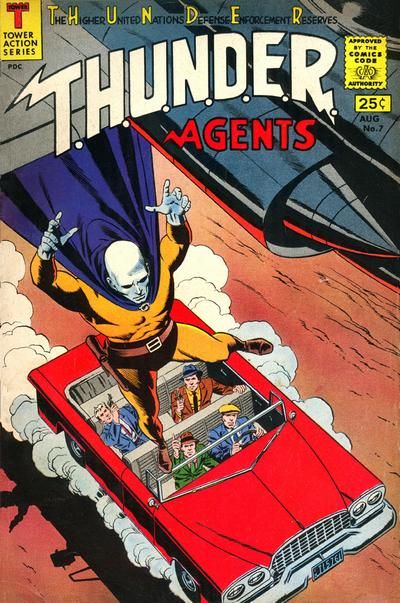



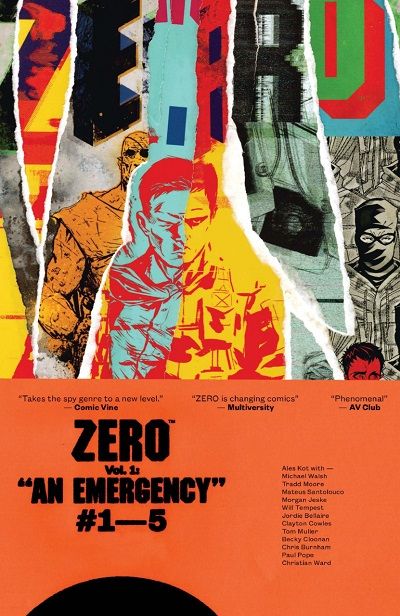 Back in 1993, when Brian Michael Bendis was a nobody who styled his name with an "Æ" because he was insufferable, he produced a two issue mini-series through Caliber called
Back in 1993, when Brian Michael Bendis was a nobody who styled his name with an "Æ" because he was insufferable, he produced a two issue mini-series through Caliber called 
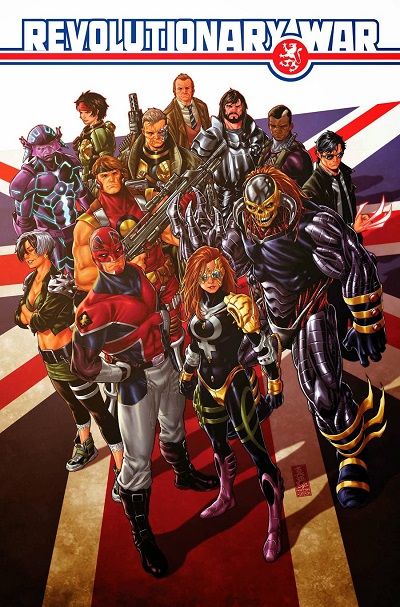
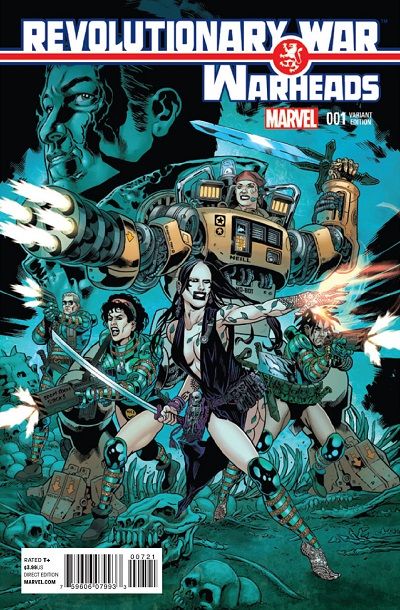
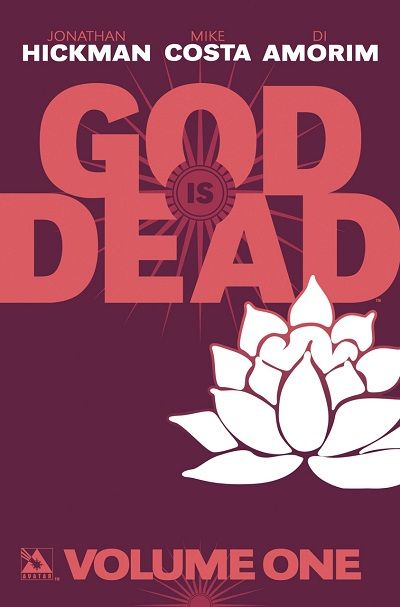 God is not dead. It's actually a second coming, not of Jesus, but of oodles of ancient deities of world myth clashing like Mortal Kombat with global consequences.
God is not dead. It's actually a second coming, not of Jesus, but of oodles of ancient deities of world myth clashing like Mortal Kombat with global consequences.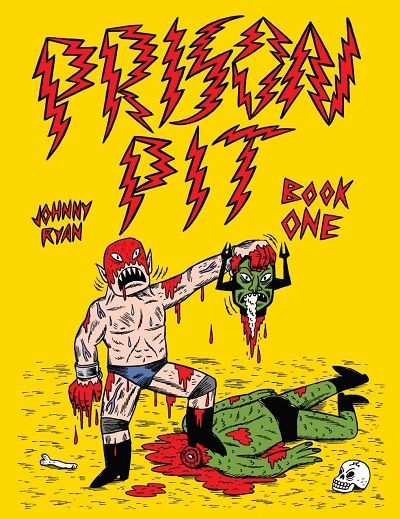 I've had limited exposure to Johnny Ryan, mostly through Angry Youth Comix, which wasn't my bag. However, Tucker Stone has talked up his graphic novel series Prison Pit, so I opted to give it a try. Johnny Ryan still isn't my bag. A badass alien criminal who dresses like a luchador gets sentenced to a truncated life on an extremely hostile penitentiary planet. I don't recall if he's ever given a name, and it's unimportant. This guy commits and has committed upon him acts of heinous violence that usually bring in some element of wild alien biology as a complication in the action. Animated tentacle intestines, exo-suits made from mounds of ejaculated sperm... that sort of thing. There isn't much plot or dialogue, so you can burn through the initial 120 page volume inside a few minutes. If you're into unpretentious, boyish avenues to ultraviolence or are curious how Jack Kirby might have handled a symbiote that fellates its master while he's covered in the blood and gore of their opponents, this might be for you. To the rest of us, it's juvenile, amateurish, uninvolved, unevolved and all around ridiculous.
I've had limited exposure to Johnny Ryan, mostly through Angry Youth Comix, which wasn't my bag. However, Tucker Stone has talked up his graphic novel series Prison Pit, so I opted to give it a try. Johnny Ryan still isn't my bag. A badass alien criminal who dresses like a luchador gets sentenced to a truncated life on an extremely hostile penitentiary planet. I don't recall if he's ever given a name, and it's unimportant. This guy commits and has committed upon him acts of heinous violence that usually bring in some element of wild alien biology as a complication in the action. Animated tentacle intestines, exo-suits made from mounds of ejaculated sperm... that sort of thing. There isn't much plot or dialogue, so you can burn through the initial 120 page volume inside a few minutes. If you're into unpretentious, boyish avenues to ultraviolence or are curious how Jack Kirby might have handled a symbiote that fellates its master while he's covered in the blood and gore of their opponents, this might be for you. To the rest of us, it's juvenile, amateurish, uninvolved, unevolved and all around ridiculous. 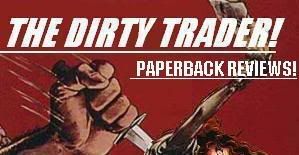

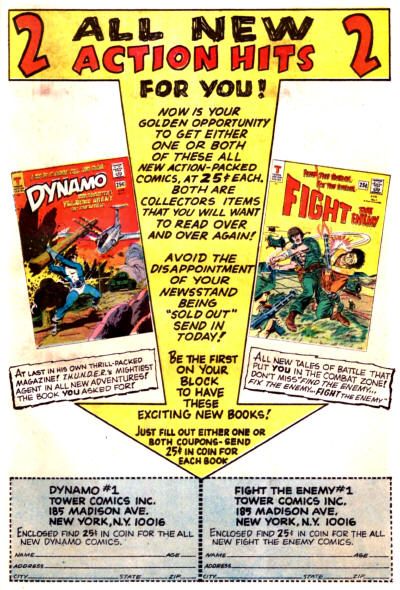




 I read this trade a month or two ago, but put off writing a review because of general life fatigue and because it just wasn't an important thing for me to do. With the announcement of the bi-weekly arc "All Out War," the series gave me a jumping-off point, so we're in lame duck mode here. The series has always been a bit of a western, but has taken on a few war feature tropes, though processed through a Road Warrior filter that renders it cheesy and half-assed. This volume starts with a gentle wading in chapter, establishing where our heroes and their relationships sit at the eve of war. Then comes the first big gambit against our villain, Negan, which is half clever/half obvious. It's nice to see the good guys take an early advantage and undercut the seeming infallibility of Negan, but we all know that won't last, because, y'know, Rick's the leader. The war continues on other fronts with the idea of building up Rick's rep, but this is done through highlighting the incompetence and cowardice of leaders who are not Rick, so that we know he's at least the best of what's around. The worm turns, bad things happen to nothing characters, and our heroes return to underdog status by the chapter break.
I read this trade a month or two ago, but put off writing a review because of general life fatigue and because it just wasn't an important thing for me to do. With the announcement of the bi-weekly arc "All Out War," the series gave me a jumping-off point, so we're in lame duck mode here. The series has always been a bit of a western, but has taken on a few war feature tropes, though processed through a Road Warrior filter that renders it cheesy and half-assed. This volume starts with a gentle wading in chapter, establishing where our heroes and their relationships sit at the eve of war. Then comes the first big gambit against our villain, Negan, which is half clever/half obvious. It's nice to see the good guys take an early advantage and undercut the seeming infallibility of Negan, but we all know that won't last, because, y'know, Rick's the leader. The war continues on other fronts with the idea of building up Rick's rep, but this is done through highlighting the incompetence and cowardice of leaders who are not Rick, so that we know he's at least the best of what's around. The worm turns, bad things happen to nothing characters, and our heroes return to underdog status by the chapter break.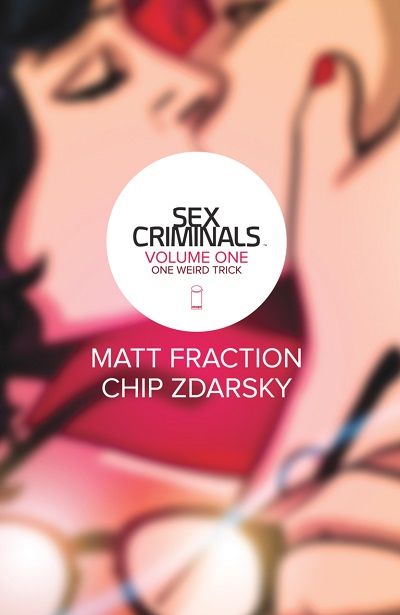 I find it strange and a bit disappointing that Image has released two buzzy series in the past year whose titles start with the word "Sex" and neither is especially sexy. It's also strange that Casey & Kowalski's
I find it strange and a bit disappointing that Image has released two buzzy series in the past year whose titles start with the word "Sex" and neither is especially sexy. It's also strange that Casey & Kowalski's 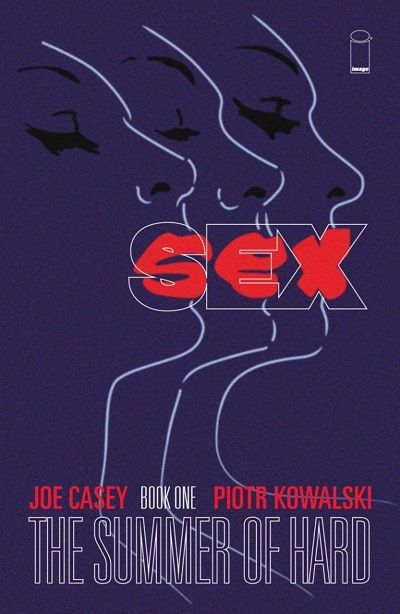 Growing up poor and nomadic, I embraced television, comic books and action figures to an unhealthy degree. These were, after all the "relationships" I could afford to maintain and carry with me wherever my shitty deadbeat parents dragged me. By the late '90s, I'd put away my toys, but running a comic shop scratched that itch, and I traded out TV for a pathetically large attention investment in the internet. Outside of DVD sets, my estrangement from television held through the aughts, but the rise of high quality cable offerings finally drew me back to weekly television.
Growing up poor and nomadic, I embraced television, comic books and action figures to an unhealthy degree. These were, after all the "relationships" I could afford to maintain and carry with me wherever my shitty deadbeat parents dragged me. By the late '90s, I'd put away my toys, but running a comic shop scratched that itch, and I traded out TV for a pathetically large attention investment in the internet. Outside of DVD sets, my estrangement from television held through the aughts, but the rise of high quality cable offerings finally drew me back to weekly television.